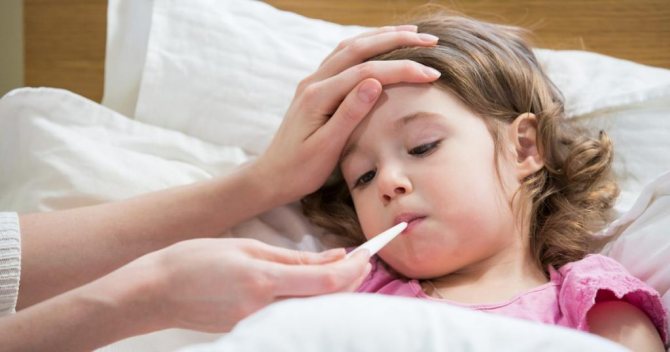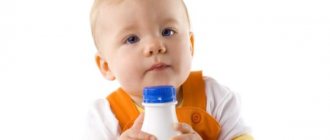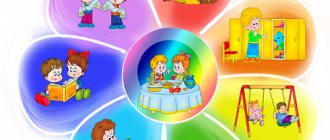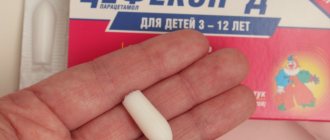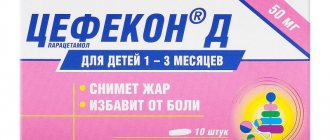Can Paracetamol be given to children, and in what dosage? This remedy effectively copes with high temperatures, while it does not have any effect on the cause of the disease, but only blocks its symptoms - pain and fever. Whether its use is justified and what kind of medicine it is, you will find out from this article.
What temperature can be reduced
Increased body temperature can be a consequence of various inflammatory processes, viral or bacterial infections. This is how the body fights pathogens. Doctors do not recommend lowering a temperature not exceeding 38.50 (for children under 5 years of age - 380C), so as not to interfere with natural defense mechanisms.
Scientists have found that most viruses and bacteria die at this temperature or their survival is threatened. However, in the case of teething in babies, hyperthermia does not have any functional significance, so you can give the child antipyretics even at lower levels than 38-38.50.
Higher effectiveness of Paracetamol for viral infections as an antipyretic
A similar reaction is also possible as a result of vaccination. Therefore, you should always keep antipyretic and painkillers in your children's medicine cabinet.
Paracetamol is widely used to relieve symptoms of fever. This drug also has an analgesic effect, so it is used for headaches, dental, muscle and other types of pain. The action is aimed directly at the brain centers of thermoregulation and pain.
What kind of medicine is this
Paracetamol is a non-narcotic pain reliever. The anti-inflammatory effect is so little expressed that it is not taken into account when prescribing. For problems with blood pressure, the drug is also absolutely safe.
The drug is not an antiviral or antibiotic; its effect is purely symptomatic.
Paracetamol should be taken with caution in case of kidney and liver diseases, as well as diabetes mellitus, when it comes to suspension or syrup. This drug is also contraindicated in case of fructose intolerance. Allergic skin reactions in the form of urticaria, itching, and redness are possible.
The action of Paracetamol begins on average forty minutes after administration . It is more rational to take it an hour or two after a meal, since the medicine taken immediately after a meal will be absorbed much longer, which will delay the onset of the effect.
Taking Paracetamol on an empty stomach is also contraindicated to avoid reactions from the gastrointestinal tract.
At what age can you take Paracetamol?
To correctly calculate the dosage of the medicine, you need to at least approximately know the child’s weight. For calculation, use the formula: 10-15 mg of active ingredient per 1 kg of weight . Take up to 4 times a day, at intervals of 4-6 hours.
Paracetamol can be given to children after 1 month. However, if the situation requires it, the drug is used for newborns. In this case, the medicine is prescribed exclusively by a doctor, usually in the form of a suspension. This form of Paracetamol does not contain ethyl alcohol, therefore it is more preferable for children. The dosage is calculated strictly according to the formula, since a small organism is able to react to even a slight excess of the dose.
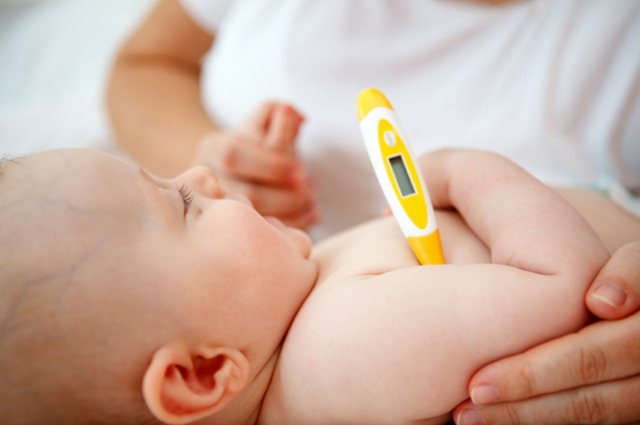
Paracetamol suppositories are a more convenient form for children in the first 6 months of life
For children over 3 months of age, it can be used in the form of syrup or rectal suppositories. The syrup tastes a little sugary, however, it is not recommended to dilute it . It is better to give the child a little water to drink after taking it. The effect occurs faster when taking syrup, but when administering suppositories it lasts longer.
Suppositories are available in dosages of 0.08, 0.17 and 0.33 g for children up to 12 months, 1-6 years and 7-12 years, respectively.
The drug should be taken only in an emergency. If a single dose manages the fever, you should not continue use to prevent an increase in temperature .
Release form
Paracetamol for fever is produced in three dosage forms:
- pills;
- syrup;
- rectal suppositories.
All of these types of medication are designed to reduce high fever. It is necessary to give a child paracetamol in certain forms depending on his age.
The main advantage of the drug in tablet form is its low price, especially when compared with syrups. Most parents resort to tablets only when the child is five years old. It is at this age that a child can swallow Paracetamol tablets so that it does not get stuck in the throat. Some mothers are in no hurry to give their baby medication in this form and use it only from the age of six.
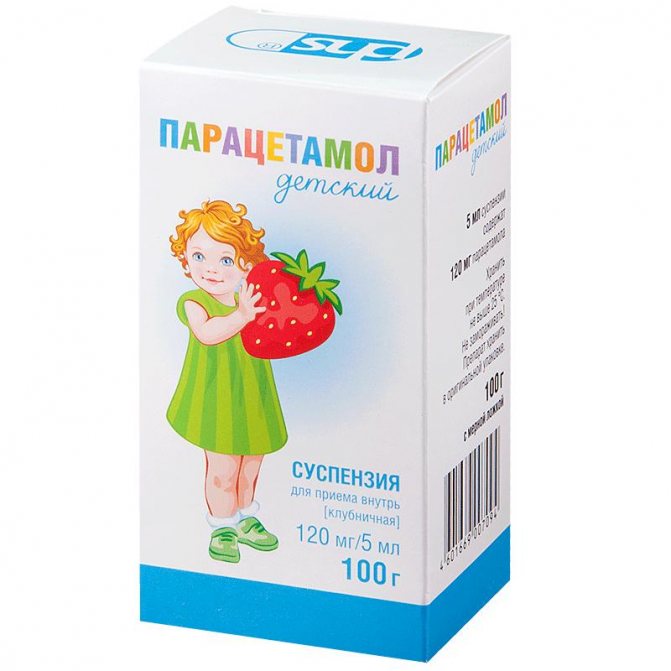
Is it possible to give children Paracetamol tablets?
Paracetamol in tablet form is usually prescribed to older children and adults. However, if there are no difficulties with swallowing, the drug can be used in this form from 3 years of age.
Tablets are available in dosages of 200, 325 and 500 mg.
| For children from 3 to 6 years old | maximum single dose – 150-200 mg |
| Ages 7-12 | maximum single dose – 200-325 mg |
| Over 12 years old | maximum single dose – 0.5-1 g |
Sometimes doctors prescribe Paracetamol tablets to children aged 2 years. For such small ones, you will have to crumble it and dilute it with a teaspoon of water . But the medicine has a very bitter taste, which the baby is unlikely to like. Therefore, for this age it is more preferable to use syrup or rectal suppositories.
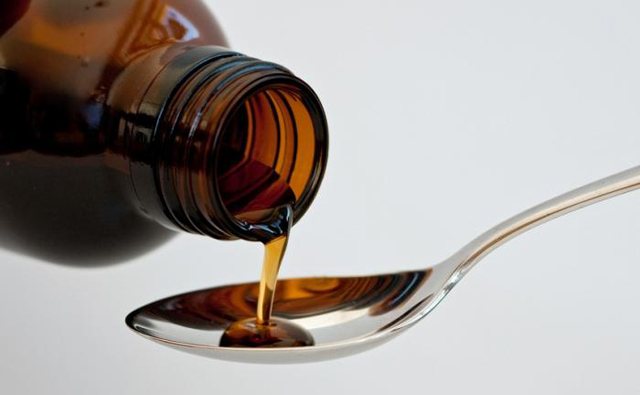
5 ml of syrup - 1 tsp, contains 120 mg of Paracetamol
The annotation for Paracetamol tablets states that the medicine is approved for children from 3 years of age. Most pediatricians do not recommend taking pills for children under 5 years of age .
At 3-6 years old, the permitted single dosage is 150-200 mg. The most convenient form is tablets with a dosage of 200 mg. For children with low body weight, half a tablet may be enough for one use.
Schoolchildren 8-9 years old can be safely given a whole 325 mg tablet. The frequency of administration is the same for any dosage - an interval of at least 4 hours, from 1 to 4 times a day .
It is recommended to take Paracetamol to lower the temperature for no more than 3 days, to relieve pain of various types - up to 5 days.
Is Paracetamol allowed for children aged 2 years?
According to the instructions for use, it is known that the drug can be given to a child of this age and older. But it should be noted that at two or three years old it is preferable to give syrup to a small patient, and before two years it is best to use rectal suppositories.
Children with fever can take the drug in tablet form, but the drug must first be crushed and then given to the child with water.
It must be remembered that at elevated temperatures, the child can be given the drug no more than four times a day. The time interval between uses should be four to six hours. The duration of treatment should not exceed three days.
Whether a child can be given Paracetamol for fever depends on age and body weight. If a small patient has a fever, the medication should be calculated based on the following dosage: per kilogram of the child’s weight, 10 milligrams of an antipyretic drug will be required.
For a baby whose body weight is 10 kilograms, 100 milligrams of medication will be required. It is important to know that the medicine helps bring down a child’s fever thirty minutes after use.
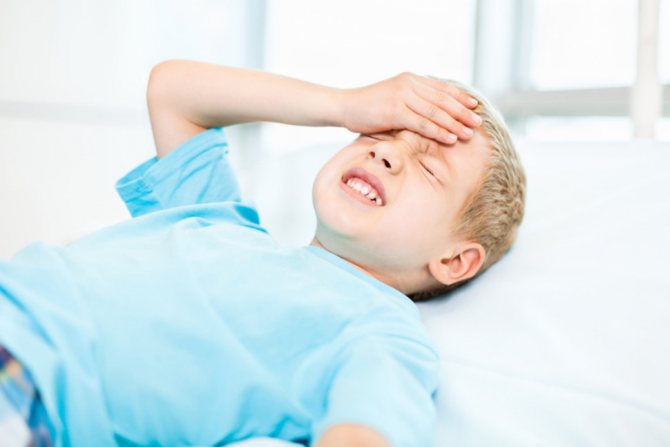
What can happen with an overdose
When complex treatment of the disease, in combination with other drugs, caution should be exercised, since they may also contain Paracetamol. In this case, the body may be poisoned .
Medicines should not be left unattended and within the reach of children. Once a baby gets into the hands of sweet syrup, he may like the taste, but then undesirable consequences cannot be avoided.
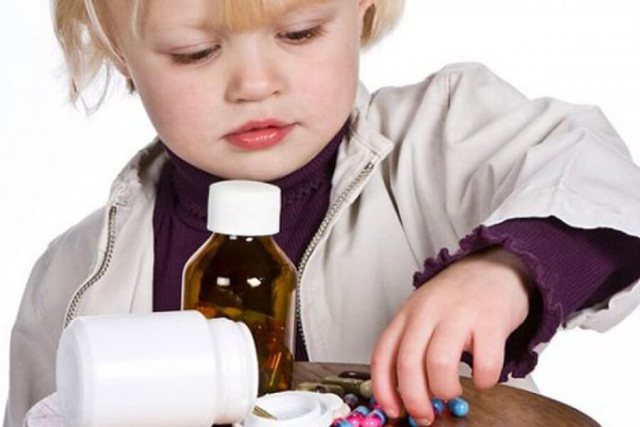
The daily dose should not exceed 60 mg/kg of the child’s weight, and a single dose of 140 mg/kg leads to death. So the optimal intake would be 10-15 mg per 1 kg of weight.
If the temperature is not reduced very effectively, you should not achieve an improvement in the effect by increasing the dose of the medicine or the frequency of its use . In this case, it is necessary to consult with your doctor and select other remedies.
In any case, even if the recommendations for use are followed, monitoring the patient’s condition is necessary in order to take action in case of individual intolerance or overdose without wasting vital minutes.
If the dosage is exceeded or with long-term use of Paracetamol, the following symptoms may occur:
- pale skin;
- nausea;
- vomit;
- pain in the liver area;
- increased bilirubin in the blood;
- renal failure;
- arrhythmia;
- pancreatitis;
- abdominal pain;
- coma.
The first signs of an overdose can manifest themselves both on the first day with a single dose exceeded, and gradually with long-term use of the drug.
Emergency help for intoxication consists of immediately stopping the drug, preferably followed by gastric lavage. It will not be superfluous to take enterosorbent. Having taken the first necessary measures, it is imperative to call emergency assistance.
It is unacceptable to take a medicine at a dose of 60 mg per 1 kg of a child’s weight. If the dosage increases above 150 mg per 1 kg, death may occur .
conclusions
Despite the relative safety of the drug, it is necessary to remember the possible serious consequences and under no circumstances self-medicate, especially when it comes to the health of the child. However, in emergency cases, parents need to know what to do to provide emergency assistance to their baby before the doctor arrives.
A rise in temperature is just a symptom. By acting only on it, it is impossible to stop the course of the disease. Therefore, taking Paracetamol will help relieve symptoms of fever or pain, but only the attending physician should identify the cause of the disease and prescribe appropriate treatment.
How to choose a thermometer for a child, read here, because, in addition to mercury, there are more convenient forms for newborns, in the form of a pacifier, or for capricious ones - non-contact thermometers.
We recommend reading the article about what first measures should be taken if a child gets his feet wet.
Instructions for use
Is it possible to give Paracetamol to children? It is possible, but it should be noted that if a patient of five or six years cannot swallow a tablet whole, it must be divided into parts or crushed into powder. It is impossible to give the drug in tablet form to an infant, so it is better to resort to rectal suppositories.
Paracetamol 200 milligrams is very popular. The tablets are instantly absorbed by the body, so after only half an hour a positive effect occurs from taking them. In addition, the tablets do not contain unnecessary impurities that could harm the child when using the drug orally.
You can not only bring down the temperature with medicine, but also eliminate pain from migraines, as well as neuralgia and osteochondrosis. How to eliminate fever with Paracetamol:
- Children under two or three years old should not be given antipyretic tablets. But, if the doctor has prescribed the use of a medicine for a child in this form, then you can resort to such therapy.
- It is recommended that young patients under the age of five or six years be given the drug in tablet form, but only in a dose of 100 milligrams. The medication can be given to a child at this age no more than twice a day.
- Children under 12 years of age are prescribed Paracetamol in a concentration of 200 milligrams. The dosage of the medication depends primarily on body weight, so before giving it to the patient, you need to read the instructions.
- Adolescents over 12 years of age are prescribed the drug at a concentration of 500 milligrams.
The instructions for use indicate that children under 12 years of age can be given Paracetamol with a concentration of the active substance of 500 milligrams, but the dosage must be calculated correctly. It is important to note that before giving the drug to a child with a high fever, you should consult a medical specialist. The doctor will tell you how to use the medication, how much Paracetamol you need, as well as the frequency of use.
It is worth noting that a child’s temperature needs to be corrected in a situation where the thermometer shows more than thirty-eight degrees. An adult patient can begin to eliminate the fever if the temperature is at around 38.5.
